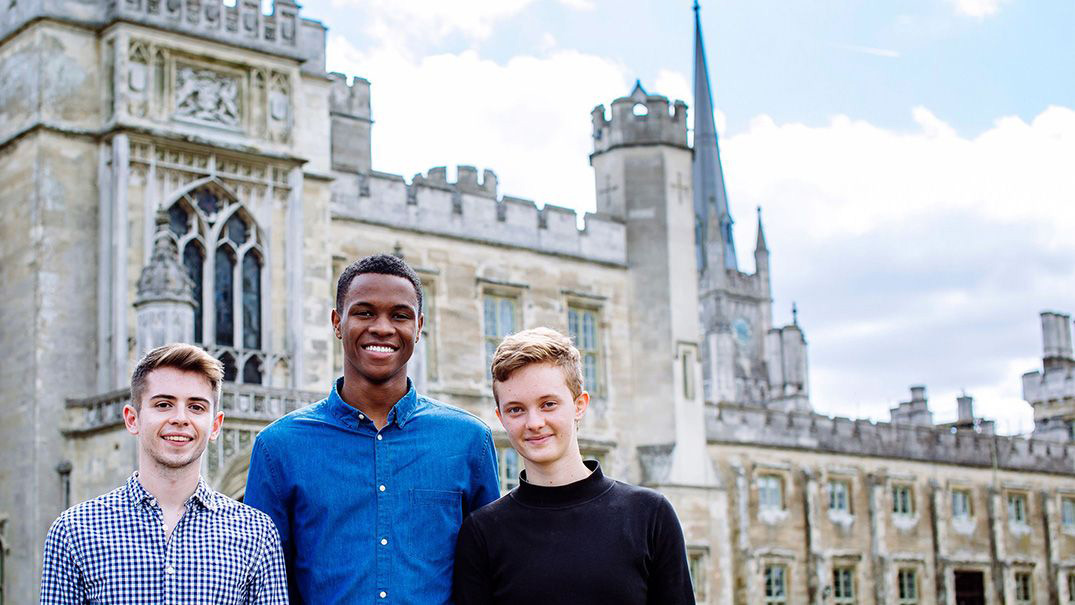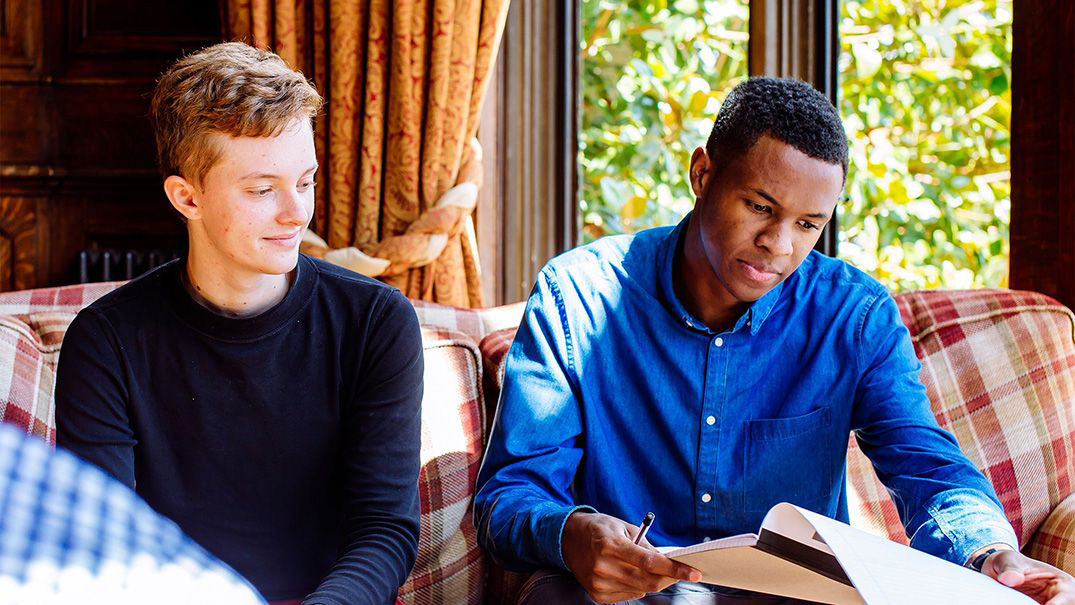
From a construction site in sweltering south Georgia to an elegant English castle, a trio of Emory students is on a globe-trotting million-dollar quest this summer to address one of the world’s most urgent challenges — helping people find physical comfort in the face of climate change.
One answer, they believe, might be the “Vimband,” their idea for a personal temperature-regulation device that could be worn to cool the body in extremely hot weather or warm individuals enduring severely cold temperatures.
Amid scientific reports that global temperatures are climbing, direct body cooling could go far in providing personal relief, especially for populations living in increasingly hot climates, says Ryan James, a sophomore from Highland, Maryland, majoring in business and computer science, who convened a team of Emory students eager to pose a solution to the problem.
“Worldwide, the use of air-conditioning is expected to nearly triple by 2050, and with detrimental environmental effects, that isn’t a sustainable solution,” James says. “There needs to be an alternative.”
So instead of controlling the temperatures of large buildings or residences, the Emory team set their sights on a smaller, more efficient target — the individual.
Together, they’ve created a prototype for a rechargeable device that essentially functions as a small, personalized heating and cooling unit. The compact box may be worn around the wrist, neck or head — pulse points on the human body near major arteries that play a critical role in regulating body temperature.
The Vimband was conceived and developed by Emory undergraduates James; Jesse Rosen-Gooding, a sophomore from Albuquerque, New Mexico, majoring in human health; and Kieren Helmn, a senior from Preston, England, majoring in business, in hopes of winning the Hult Prize, an annual business innovation challenge open to students around the world.
The competition’s charge: Create market-driven, socially conscious, sustainable business solutions for some of the world’s most pressing problems, especially those adversely affecting low-income communities.
Sometimes called “The Nobel Prize for Students,” the annual Hult Prize competition draws student participants from colleges and universities in over 100 countries who pose solutions to issues ranging from education access and water quality to health care and the global food crisis.
This year’s Hult Prize theme is “Harnessing the Power of Energy,” and the winning team will receive $1 million in seed capital intended to help the students launch a company.
But first, teams must compete on local and regional levels for the chance to earn one of 50 spots in the Hult Castle Accelerator, an intensive six-week program held this summer at Ashridge House, a sprawling country estate northwest of London, England.
Working with mentors, investors and corporate partners, the accelerator immerses students in a rigorous curriculum to help transform their proposed solutions into actual startups. On Sept. 15, six teams will advance to finals held at the United Nations in New York City.
Though past campus teams have made it into regional competition, this marks the first time Emory students have progressed into the Hult Accelerator round — the chance of a lifetime to put their ideas into action.

Jesse Rosen-Gooding and Ryan James look over notes related to their Vimband project.
The Inspiration
The journey to this year’s competition began with James, who’d heard about the Hult Prize during his first year at Emory. When this year’s theme was announced he was all in, floating an invitation over social media: Was anyone interested in starting a team?
Rosen-Gooding and Helmn were quick to respond. All three students are Woodruff Scholars in Emory College of Arts and Sciences, and they initially met and began working together through the Emory Scholars Program.
Given the broad theme for the Hult Prize competition, they knew their focus would have to be refined. And they didn’t have to look far for inspiration.
“I had taken a gap year before coming to Emory, which I spent living with a host family in East Timor,” says Rosen-Gooding. “I found it unbearably hot sweating throughout the night and thought, ‘This is what we need to target — getting cooling solutions to people where they most need it.’ So we came upon the idea of direct body cooling, targeting the individual instead of spaces.”
“It was the best solution we could find that takes into account environmental stewardship while protecting the health and comfort of humans as temperatures rise,” he adds.
Early on, James had coined the name “Vimband,” borrowing from the word “vim” to project the sense of energy and vitality that he hoped those who use the device would feel.
Over a few months, the trio took a deep research plunge, “all of us Googling away, trying to figure out a good solution — documenting this idea, that idea, types of materials, fans, the upsides and downsides of each technology,” Rosen-Gooding recalls.
In the end, they kept returning to the idea of thermoelectric modules. “Thermoelectric coolers are used in your computer, your refrigerator, even the Mars Rover,” explains Helmn. “We weren’t inventing a new technology, we were just applying it in a way it hadn’t quite been done before.”
And although there are a few competing products on the market, the team felt they were more effective at warming than cooling. There was room, they reasoned, for improvement.
By last November, the Emory team had settled on developing a personal cooling device; by December they were feverishly refining a pitch to present that month at a local competition at Emory’s Goizueta Business School — a presentation that, at the time, would not include a prototype of the device.
When the team won the first round and learned they would be heading to San Francisco in March to join about 60 teams at a Hult Prize regional competition, work renewed in earnest.
“We actually built our first prototype through MAKEmory (formerly the TechLab) in Cox Hall,” James says, recalling countless trips to Home Depot, a crash-course in sourcing silicone, and several failed attempts. But each failure carried its own lessons, and the campus lab offered the tools and expertise to keep moving forward.
Using the lab’s 3D printer, the team created sample cases and components. For a silicone wristband, they employed a CNC (computer numerical control) carving machine. Soldering and electronics equipment allowed for the assembly of internal hardware.
To strengthen their presentation, they even took their prototype to Miami, Florida, for field research. “We tried it on about 104 people on the beach and 99 said they would buy one,” Helmn recalls. “And this was just a prototype that didn’t even look that nice. That was when we started believing there might actually be a market for this.”
Reflecting upon their progress, the team credits the layers of multidisciplinary support, mentorship and expertise they’ve received from across campus, including Goizueta Business School, the Nell Hodgson Woodruff School of Nursing, Emory College of Arts and Sciences, the Emory Center for Ethics, the Division of Campus Life, and both the Office of Emory Provost Dwight A. McBride and the Office of Emory President Claire E. Sterk, which has made a significant investment in the project.
Energy Innovators was originally published on the Emory University website.